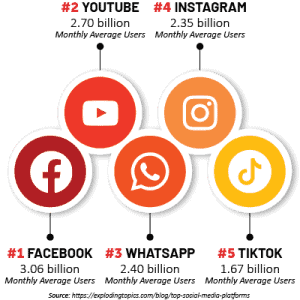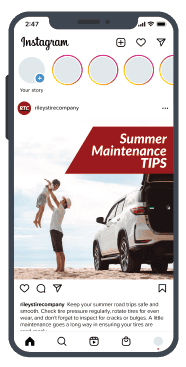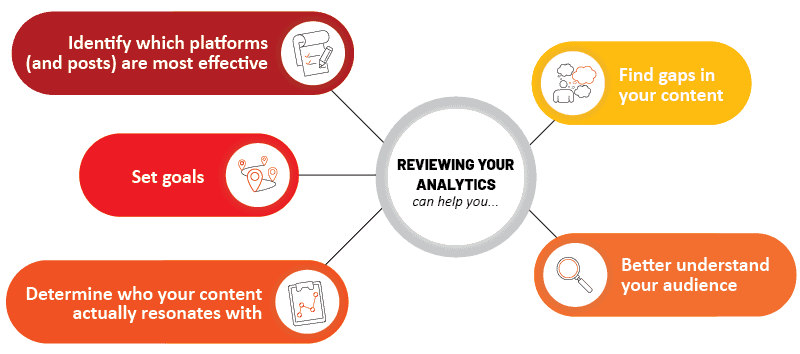Table of Contents
Facebook, LinkedIn, TikTok, Instagram – the social media platforms just keep growing. One viral post can have you rethinking your entire social media strategy only to find out you had more consistent success on a different platform. So how do you keep it all straight?
If you’re looking to jump into the world of social media marketing, you may find it a bit confusing. How often should you update your status, what would you post about, and what in the world is Pinterest?
More importantly, will anyone even care what you post, share, or pin? We know it’s a lot, but that’s okay, you don’t need to know it all to get started. In fact, it’s impossible to know it all.
Algorithms and usage change all the time, the important thing is to find the strategy that works for you.
With that in mind, here are five easy tips that will help to demystify social media and set you up with a plan for making it work for your business.

1. Start Small
You don’t need to be on every social media platform there is right away. In fact, you may find that there are a few that work well for your business. Focus on those. Work to build your presence on one platform and expand to others if and when the time is right. So many businesses jump into social and soon realize that they don’t have the time or resources to keep each of their accounts updated. Customers who land on a Facebook page that hasn’t been updated in a month will automatically think that lack of response indicates a slow turnaround time or that customer service isn’t important to that company.
2. Create Content Pillars
Now that you’ve decided where to be, it’s time to figure out what to say. The last thing you want to do is get stuck scrambling for a content idea the day you want to post. That’s where content pillars come in.
Content pillars help you identify the topics you want to focus on in advance so you can avoid the last-minute pressure to “just get something posted”. They also help set guardrails for you and your team to help everyone stay on brand, stay consistent, and stay relevant to your audience.
For example, let’s say you run a clothing company and your target audience is Gen Z consumers entering the workforce. One of your content pillars might be fashion inspiration, which could then be broken up into subtopics such as work-from-home, corporate, and business casual.
One other benefit to planning using content pillars is that it helps you identify where your content gaps are. If you notice you have 10 posts focused on a specific pillar, you can more easily swap them out and have a framework to help you come up with new ideas. We recommend identifying 3-4 content pillars and accompanying subtopics that help support your overall vision and plan for social media. For more tips on creating content, check out our content guidebook.
3. Share Don’t Sell
The most important thing to realize is that social media isn’t about you. It’s easy to think of social media as a digital marketing platform for promoting your products and services, but the more you try to sell, the less people will listen.

For example, your page or profile is a place for you to share information that would be important to your audience. Let’s say your company sells tires. Having an Instagram feed devoted to posts about sales on tires probably wouldn’t have many fans.
However, if you share information about the relationship between tire tread and gas mileage, tips for driving in bad weather, and fun places to visit that are within driving distance from your business, your page would be interesting and give people a reason to interact with you on a regular basis. They may not always need to buy tires, but the other content you share is relevant to their everyday lives.
These types of engagement opportunities help you connect with your audience and keep you top of mind when they may eventually be looking to purchase tires. Which brings us to point number four…
4. Engage
Think of social media like your favorite local coffee shop. It’s a place where people meet to socialize, share ideas, and network. They’re there to engage, not sit at a table in the corner by themselves. Nobody wants to go get coffee with the person who dominates every conversation by always talking about themselves.
Sharing interesting content that sparks conversation will help your audience to connect with you. Don’t be afraid to ask your followers to engage. Host a contest that requires people to like, post, pin, or share to be entered. You can also encourage your fans to share pictures and ideas in the comments or by tagging your brand in their posts. And please, if anything, make an effort to reply to comments. By turning your page into a forum for people interested in the products and services you provide, you’re giving them a voice and positioning yourself as an expert on the topic.
5. Don’t Neglect Your Analytics
Want to know a secret? Social media success doesn’t happen in a day. Or a week. Sometimes not even a year. It takes time to build a following and find the content that resonates best with your audience.
So as you’re building your page, trying out new content, and engaging with your followers, don’t forget to keep an eye on what is and isn’t working. You can view analytics for all sorts of things like followers, likes, saves, shares, comments – the list goes on. It’s the best way to identify posts that your audience loves and wants to see more of, and ones you should try to phase out in the future. Side note – just because one post goes viral doesn’t mean a similar one will, so don’t put all your eggs in one basket.

If you concentrate on picking the right social media platform and focus on sharing content that’s relevant and important to your audience, you’ll end up with a social presence they’ll want to engage with. And always remember, social media is about them, not you. Taking the time to research your audience will help you develop a social media strategy and tailor your content in a way that engages them and builds connections. Because that’s what social media is all about, right?
